The 1930 Buffalo Nickel’s value depends on mint marks, condition, and errors. Coins without mint marks (Philadelphia) and “S” marked pieces (San Francisco) vary in worth based on grade. Key value factors include repunched mint marks (RPMs), where marks are struck twice, and over mint marks showing one mark over another. While the famous “three-legged” 1937-D and “8 over 7” 1918/7-D errors don’t apply to 1930, error varieties still increase value significantly. The high-relief design causes dates to wear easily, making sharp, high-grade specimens with readable dates substantially more valuable than worn examples.
The 1930 Buffalo Nickel represents an interesting crossroads in American numismatics—minted during the early Depression era when production numbers dropped significantly compared to the roaring twenties. While not among the rarest dates in the series, certain varieties and high-grade examples can command impressive premiums. Understanding the subtle differences between Philadelphia and San Francisco strikes, recognizing valuable errors, and accurately grading your coin’s condition can mean the difference between a five-dollar piece and a four-figure treasure.
Understanding the 1930 Buffalo Nickel Production
The United States Mint produced Buffalo Nickels at two facilities in 1930: Philadelphia (no mint mark) and San Francisco (S mint mark). The Philadelphia Mint struck 22,849,000 pieces, while San Francisco contributed just 5,435,000 coins—making the S mint mark variety notably scarcer at less than one-quarter of Philadelphia’s output.
To identify your coin’s origin, flip it over and examine the reverse side beneath the buffalo, just above the denomination “FIVE CENTS.” If you see a small “S,” your coin came from San Francisco. No letter indicates Philadelphia production. This seemingly minor detail creates substantial value differences, particularly in higher grades.
The 1930 issues came during designer James Earle Fraser’s original Type 1 design specifications, featuring the American bison standing on a raised mound. By 1930, the Mint had seventeen years of experience striking these coins, yet the high-relief design still presented challenges. The date and other prominent features wore down quickly in circulation, making well-preserved specimens genuinely scarce today.
1930 Buffalo Nickel Value by Grade and Mint Mark
Philadelphia Strike (No Mint Mark)
The Philadelphia 1930 Buffalo Nickel represents the more common variety, though “common” is relative when discussing ninety-year-old coins. In lower circulated grades, values remain modest:
| Grade | Approximate Value |
|---|---|
| Good (G-4) | $1.50 – $2.00 |
| Fine (F-12) | $3.00 – $4.00 |
| Very Fine (VF-20) | $6.00 – $8.00 |
| Extremely Fine (EF-40) | $18.00 – $25.00 |
| About Uncirculated (AU-50) | $35.00 – $50.00 |
| Mint State (MS-60) | $65.00 – $85.00 |
| MS-63 | $110.00 – $140.00 |
| MS-65 | $275.00 – $350.00 |
| MS-66 | $650.00 – $900.00 |
According to Heritage Auctions 2023 records, a PCGS MS-66 example brought $840 at auction, while an exceptional MS-67 specimen—extremely rare for this date—sold for $3,120 in early 2024. Population reports from major grading services show fewer than 200 coins certified at MS-66 or higher for the 1930 Philadelphia issue.
San Francisco Strike (S Mint Mark)
The 1930-S commands significantly higher premiums across all grade levels due to its lower mintage:
| Grade | Approximate Value |
|---|---|
| Good (G-4) | $3.00 – $4.50 |
| Fine (F-12) | $8.00 – $12.00 |
| Very Fine (VF-20) | $20.00 – $28.00 |
| Extremely Fine (EF-40) | $55.00 – $75.00 |
| About Uncirculated (AU-50) | $110.00 – $150.00 |
| Mint State (MS-60) | $185.00 – $240.00 |
| MS-63 | $350.00 – $475.00 |
| MS-65 | $1,200.00 – $1,650.00 |
| MS-66 | $3,500.00 – $5,200.00 |
A Stack’s Bowers auction in October 2023 saw a PCGS MS-65 1930-S realize $1,560, while an NGC MS-66 brought $4,680 at a GreatCollections sale in January 2024. The population of MS-66 or better 1930-S Buffalo Nickels totals fewer than 75 pieces across both major grading services, making gem examples genuinely rare.
Known Errors and Varieties Worth Seeking
Doubled Die Obverse
The 1930 Philadelphia strike includes a minor doubled die obverse variety showing doubling in the date numerals, particularly visible in the “3” and “0.” Under 10x magnification, you’ll notice a slight ghosting or shadow effect on these digits. While not as dramatic as some doubled dies in the series, this variety adds approximately 20-35% to base values in grades VF-20 and higher.
A Fine-12 example with clear doubling might bring $5.00-$6.00 instead of the typical $3.00-$4.00, while an MS-63 specimen could reach $165.00-$180.00 compared to $110.00-$140.00 for normal strikes. The key is visibility—the doubling must be obvious without straining to qualify for premium pricing.
Repunched Mint Mark (1930-S RPM)
Several repunched mint mark varieties exist for the 1930-S, with the most valuable showing a strong secondary “S” impression slightly northwest of the primary mint mark. This occurred when the hand-punching process placed the mint mark punch slightly off-center on the first attempt, requiring a second strike to properly position it.
FS-501 (Fivaz-Stanton attribution number 501) represents the strongest and most collectible RPM for this date. In EF-40 condition, this variety commands $90.00-$125.00 versus $55.00-$75.00 for regular 1930-S coins. MS-63 examples have sold for $550.00-$675.00 at major auctions, representing a 50-60% premium over typical strikes.
Die Cracks and Cuds
Advanced die deterioration produced various die crack varieties throughout the 1930 production run. The most significant involves a retained cud—a raised blob of metal where a piece of the die broke away—appearing at the rim between 5 and 7 o’clock on the obverse. This dramatic error adds substantial value: a VF-20 example might bring $45.00-$60.00, while an EF-40 could reach $125.00-$165.00.
Lesser die cracks through the date or connecting letters add modest premiums of 10-20% but require clear photographic documentation for online sales, as minor die scratches can sometimes be confused with genuine cracks.
Off-Center Strikes
Genuine off-center errors for 1930 Buffalo Nickels are scarce but occasionally surface. A 5-10% off-center strike with full date visible typically brings $150.00-$250.00 regardless of wear, while a 15-20% misalignment with complete date commands $400.00-$650.00. Strikes missing the date due to severe off-centering have limited collector appeal despite their dramatic appearance, usually selling for $75.00-$125.00.
A 1930-S struck approximately 15% off-center sold through Heritage Auctions in 2023 for $720, demonstrating the premium that mint mark scarcity adds even to error coins.
Grading Challenges Specific to 1930 Issues
The 1930 Buffalo Nickel presents particular grading challenges that directly impact value. The bison’s shoulder on the reverse serves as a critical grading point—full details here separate About Uncirculated from Mint State examples. Many 1930 coins show weakness in this area even on uncirculated pieces, a striking characteristic rather than wear.
The obverse presents its own complications. The Indian’s cheekbone should show complete detail for MS-60 or higher grades, but many 1930 strikes exhibit slight flatness from die wear during production. Understanding this distinction prevents overpaying for coins marketed as Mint State when they actually show light circulation.
Date clarity represents another crucial factor. Even light wear can soften the numerals on Buffalo Nickels, and the 1930 strikes are no exception. A coin with a sharp, fully readable date in circulated condition merits a premium over examples where digits show merging or weakness, typically adding $1.00-$3.00 in lower grades.
What Impacts Your 1930 Buffalo Nickel’s Market Value
Beyond basic grade and mint mark, several factors significantly influence what collectors will pay. Eye appeal matters tremendously—a coin with attractive original toning and no distracting marks sells for 15-25% more than a technically equal but lackluster example. A 1930-S graded MS-64 with deep golden-gray toning brought $625 at a 2024 auction, while a brilliant but heavily bagmarked MS-64 from the same sale realized only $485.
Strike quality varies considerably among 1930 issues. Full horn details on the buffalo, complete feather definition on the Indian’s headdress, and strong separation in the tail all indicate superior strikes that command premiums. The strongest strikes typically come from early die states before metal fatigue began affecting detail transfer.
Certification through PCGS or NGC adds significant value and marketability, particularly for coins graded MS-63 or higher. A raw 1930-S that appears to be MS-65 quality might sell for $900-$1,100, while the identical coin in a PCGS MS-65 holder readily brings $1,400-$1,650. The grading fee represents money well spent for premium-quality pieces.
Building a Complete 1930 Set Strategy
Collectors pursuing both 1930 varieties face an interesting value proposition. A solid Very Fine set (VF-20 to VF-30) representing both mints costs approximately $28.00-$36.00, making it achievable on modest budgets. Moving to Extremely Fine quality (EF-40) pushes the total to $75.00-$100.00, with the San Francisco coin representing 70-75% of the investment.
For those targeting Mint State examples, expect to invest $250.00-$325.00 for an MS-60 to MS-62 set, or $475.00-$625.00 for choice MS-63 to MS-64 pieces. Gem MS-65 examples of both varieties require $1,500.00-$2,000.00 combined, with the 1930-S again dominating the expense at roughly 75-80% of the total.
Many advanced collectors focus on acquiring the finest obtainable 1930-S while settling for a slightly lower grade on the Philadelphia strike, given the dramatic scarcity difference in MS-65 and higher. This strategy maximizes rarity for the available budget while still representing both mints in the collection.
Authenticating and Purchasing Your 1930 Buffalo Nickel
Counterfeits exist primarily for high-grade examples, particularly MS-65 and finer 1930-S coins where values justify the effort. Red flags include mint marks that appear added or enhanced, surfaces that look artificially textured, and weights differing from the standard 5.00 grams. Genuine Buffalo Nickels have a distinctive ring when balanced on a fingertip and gently tapped—counterfeit pieces often sound dull or flat.
When purchasing uncertified coins graded MS-63 or higher, insist on a return period and verify authenticity through local dealers or submission to grading services. The cost of authentication (approximately $20-$35 per coin) pales against potential losses from purchasing counterfeit material.
Reputable sources include established auction houses like Heritage and Stack’s Bowers, major online marketplaces with authentication guarantees, and local coin shops with strong reputations. Prices roughly 30-40% below market guides should raise immediate suspicion—if a deal seems too good to be true, it usually is.
Maximizing Returns When Selling Your 1930 Buffalo Nickel
Understanding your coin’s precise grade, variety status, and current market conditions determines optimal selling strategies. Common-date circulated examples (G-4 through EF-40) typically sell best through local dealers who can offer immediate payment, though expect wholesale offers at 60-75% of retail guide prices.
Higher-grade pieces (AU-50 and above) justify online auction venues where competitive bidding often exceeds retail guides by 10-20%. Quality photographs showing both sides under proper lighting, along with detailed descriptions mentioning strike quality and eye appeal, substantially improve results.
The strongest market for 1930 Buffalo Nickels occurs during January through April when tax refunds fuel collecting budgets, and again in November through December as collectors pursue year-end acquisitions. Summer months typically see softer demand and correspondingly lower realized prices, sometimes 10-15% below spring peaks.
Growing Your Collection Beyond 1930
After completing your 1930 set, natural progression points include pursuing other Depression-era dates (1931-S, 1932-D, 1932-S) that share similar scarcity patterns, or working toward a complete date-and-mint-mark collection spanning 1913-1938. The 1930 issues provide excellent training for evaluating strike quality and understanding how mintage figures impact long-term value across the series.
Consider specializing in a particular grade range—many collectors find satisfaction in assembling complete sets in VF-20 to VF-30 condition, where most dates remain affordable while still showing sufficient detail for appreciation. This approach typically requires $2,500-$4,500 for a complete 66-coin set including all date and mint mark combinations.
Alternatively, focusing on gem examples (MS-65 and higher) of more common dates while accepting lower grades on key rarities creates visually stunning collections showcasing the design’s full beauty. A PCGS Registry Set approach following this strategy might cost $15,000-$25,000 but results in a presentation-quality collection with strong investment potential.
You may be interested:
- 1859 Indian Head Penny Coin Value Complete Errors List And No Mint Mark Worth Guide For Collectors
- 1911 V Nickel Coin Value Guide Complete Errors List And No Mint Mark Worth Today
- 1902 Dime Coin Value Complete Errors List With O S And No Mint Mark Worth Guide
- 1788 Quarter Coin Value Complete Guide Errors List And D S P Mint Mark Worth Revealed
- 1776 To 1976 Bicentennial Half Dollar Coin Value Complete Errors List And What Your D S And No Mint Mark Coins Are Actually Worth
- 1990 Penny Coin Value Errors List How D S And No Mint Mark Pennies Are Worth Thousands Of Dollars

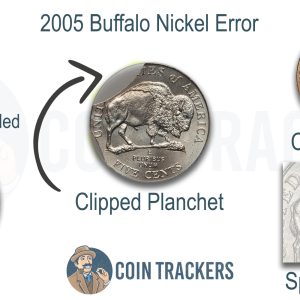
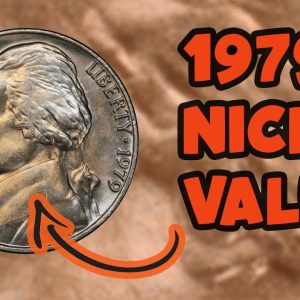
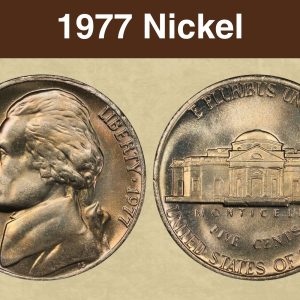
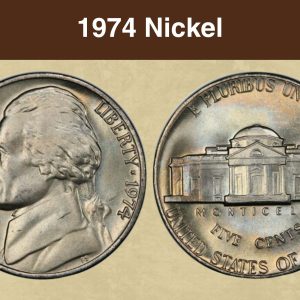
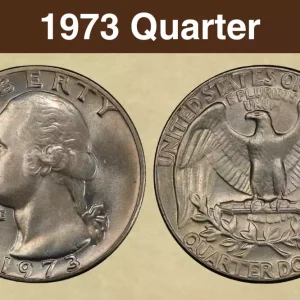
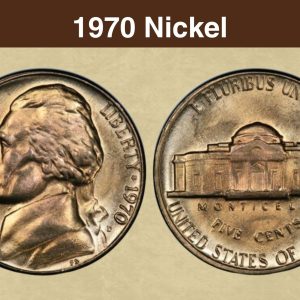
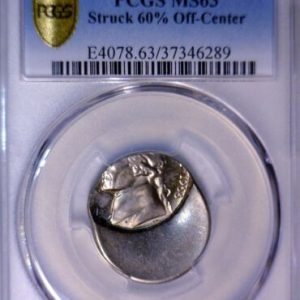
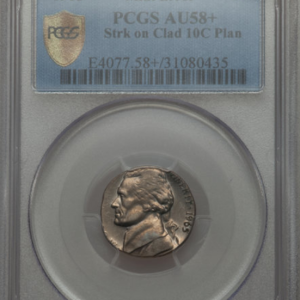
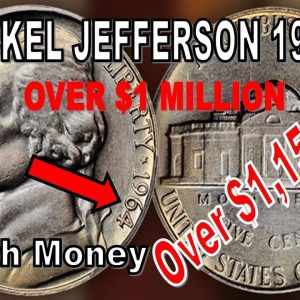
How do I know if I have a rare buffalo nickel?
A Buffalo nickel’s rarity is determined by key dates, low mintages, and specific design flaws or errors. For example, the 1913-S Type 2, 1921S, 1924S, and 1926S are rare key dates. Errors like the 1937-D “three-legged” nickel or repunched mint marks, as well as a coin’s condition, significantly increase its value.
Where is the mint mark on a 1930 Indian head nickel?
Location: If a mint mark were present, it would be on the reverse side (the side with the buffalo). Specific spot: Look underneath the words “FIVE CENTS”. 1930 Buffalo nickels: These are from the Philadelphia mint and have no mint mark.
What nickel is worth $10,000 no mint mark?
In 1942 at Philadelphia. They made no mintmark nickels but they were not 35% silver they had no silver in them they were the regular copper nickel composition.